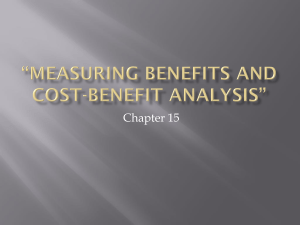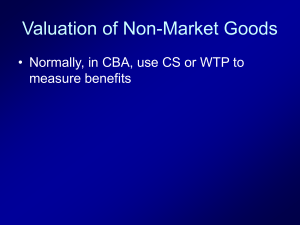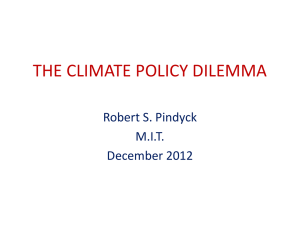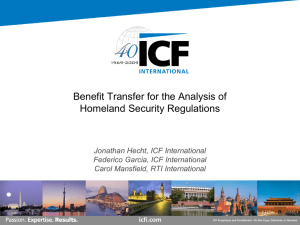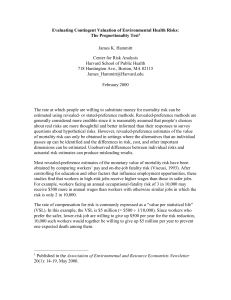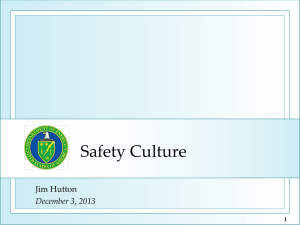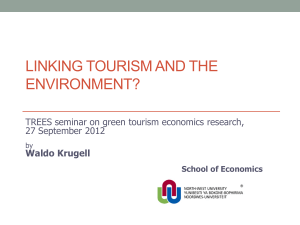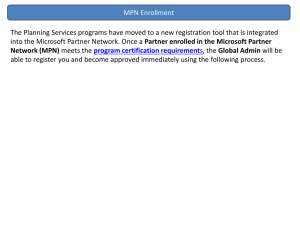PS 02-9 Onwujekwe et al 2 (WTP for PVHI)
advertisement
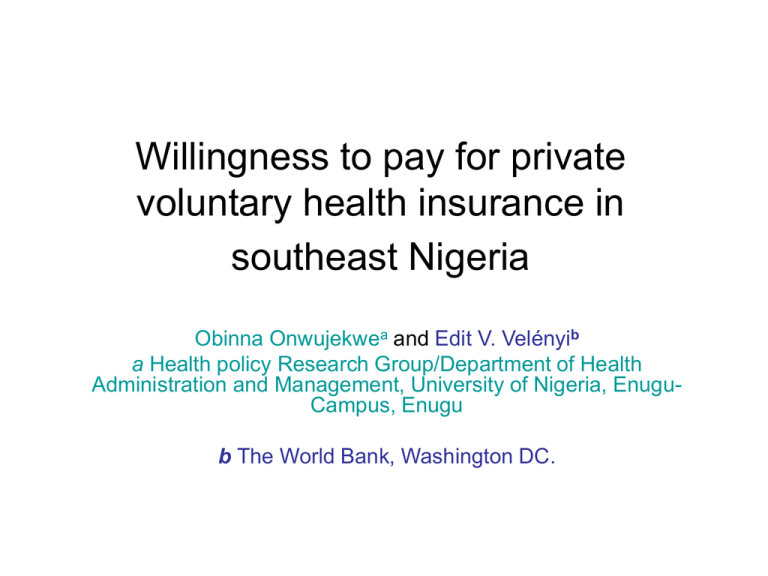
Willingness to pay for private voluntary health insurance in southeast Nigeria Obinna Onwujekwea and Edit V. Velényib a Health policy Research Group/Department of Health Administration and Management, University of Nigeria, EnuguCampus, Enugu b The World Bank, Washington DC. Rationale • A real challenge of health care financing in Nigeria is the paucity of insurance mechanisms for financial risk protection. • Public expenditures in Nigeria account for 20-30% of total health expenditures whilst private expenditures accounts for 70-80% and the dominant private expenditure is out-of-pocket spending (OOPS) (Soyibo, 2004) • The dominant reliance on OOPS and the considerable absence of risk sharing is largely responsible for catastrophic health expenditures Rationale CONTD • The National Health Insurance Scheme (NHIS) was launched in 2005 but its coverage is limited to federal government civil servants. • What happens to other people? • The National Health Financing Policy provides for the use of private voluntary health insurance (PVHI) as one strategy for ensuring universal coverage with health insurance in the country • It is important to understand the willingness of consumers to enroll and pay for PVHI for developing and implementing viable PVHI schemes Objectives • To determine the willingness to enroll and to pay for PVHI • To understand the determinants of willingness to enroll and WTP for PVHI Research Methods • The study was conducted in an urban area and a rural area in Enugu State, located in southeast Nigeria • Pre-tested interviewer administered questionnaire was used to collect data from a random sample of 200 households from the rural and 250 households from the urban area Research Methods II • The Contingent valuation method (CVM) was used to elicit willingness to pay (WTP) for PVHI using the bidding game question format. • Before eliciting WTP, a scenario was presented to the respondents describing PVHI, its potential benefits, benefit package and payment vehicle. • All the respondents were read an introductory explanation (in the local language) about PVHI and the CVM scenario. Data analysis • The data was examined for links between socio-economic status (SES), geographic location and occupation with WTP and willingness to enroll • Ordinary least squares (OLS) multiple regression analyses were undertaken to tests for theoretical (construct) validity of elicited WTP for PVHI Results Willingness to enroll and to pay for PVHI • 380 (86.0%) respondents were willing to personally enroll in PVHI and 377 (85.7%) were willing to enroll other household members. • 220 (52.1%) respondents were willing to pay a monthly premium of 500 Naira ($4.2) for themselves, whilst 98 (23.6%) were willing to pay $4.2 for other household members. • 226 (53.2%) were willing to contribute some money so that the poorest people in their communities would benefit from health insurance. Results II • For the full sample of the respondents, the median monthly WTP for personal premium was 500 Naira ($4.2), whilst it was 200 Naira ($1.7) per person for other household members. • The median monthly altruistic WTP amount was 33.3 Naira ($0.3). • The mean WTP for respondents and for other household members were $3.3 and $2.2 respectively for the full sample. • For only the respondents that were willing to pay, the mean WTP for respondents and for other household members were ($5.2) and ($5.0) respectively. Results III • Rural dwellers and worse-off socioeconomic status (SES) groups stated smaller WTP than urbanites and better-off SES groups. Results III: Geographic differences in willingness to enroll and to pay for PVHI Mean (SD) WTP self Median WTP self Mean (SD) WTP for other householders Median WTP for other householders Urban 459.1 Naira 500 Naira (342.8) 292.4 Naira (265.3) 200 Naira Rural 314.6 Naira 200 Naira (221.6) 218.7 Naira (215.7) 100 Naira SES differences in willingness to enroll and pay for PVHI Q1 Most Q2 Very Q3 poor poor n = 109 poor n = 109 n = 109 Q4 Least poor n = 109 Willing to enroll (self): n (%) 104(95.4%) 99(90.8%) 86(78.9%) 88(80.7%) Willing to pay (self): n (%) 38 (34.9%) 53(48.6%) 58(53.2%) 70(64.2%) Willing to 104(95.4%) enroll other householder s: n (%) 97(89.0%) 84(77.1%) 89(81.7%) WTP for 17 (15.6%) other householder 17(15.6%) 28(25.7%) 36(33.0%) s: n (%) SES differences CONTD • As SES increases so does the level of WTP to pay for PVHI (p<0.01). • For only the positive WTP cases, the mean WTP for the respondents was $4.4, $5.1, $4.8 and $5.9 for Q1,Q2,Q3 and Q4 • For only the positive WTP cases, the mean WTP for the other household members was $4.6, $5.1, $4.8 and $5.3 for Q1,Q2,Q3 and Q4 Construct validity • WTP was positively statistically significantly related to acceptability of health insurance and socio-economic status of the households (p<0.05). • The regression models were statistically significant (p<0.01). Conclusion I • PVHI is a promising strategy for health financing in southeast Nigeria • Unsubsidized PVHI may never cover everybody especially indigents, but if it covers some of the people willing and able to pay such as the better-off SES classes, that is at least better than having them face high OOPS Acknowledgement: • We are grateful to The World Bank, Washington DC for funding the study.

